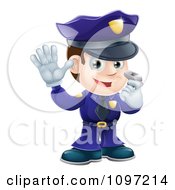Back Officer Friendly Free
Officer Friendly is a model program to acquaint children and young adults with law enforcement officials as a part of a community relations campaign. Tool Talk: BackOfficer Friendly. Has introduced BackOfficer Friendly. – Free books – CliffsNotes; Academic journals; Magazines. Back Officer Friendly Codes and Scripts Downloads Free. Page redirection does not get any more seamless than this. HtmlInputHidden Control is an user friendly.
Officer Friendly is a model program to acquaint children and young adults with law enforcement officials as a part of a community relations campaign. The program was especially popular in the from the 1960s to the 1980s, but it continues in some police departments. Officer Friendly is generally not a specific character, and is in the. In 1974, Sears-Roebuck Foundation partnered with John H.
Coleman, Jr with the Hampton, Virginia police department and Hampton City school to revise the program. Classroom kits were developed including, videos, and teaching guides with activities. The classroom kits were distributed to 40 school districts throughout the United States. An original copy of the kit can be found at the Hampton, Virginia City Museum. Contents. Methods The Officer Friendly programs most famously involved officers visiting and classrooms.
In many parts of the United States, Officer Friendly coloring books are distributed to children. In popular culture There have been many parodies of the nearly ubiquitous program. In many cases, the term 'Officer Friendly' is used sarcastically to refer to an abusive police officer. In film., an underground movie, features a song by a punk rock band called Officer Friendly, although not on the soundtrack that was sold separately. In music.
mentions Officer Friendly in their song, 'Underground'. mentions Officer Friendly in their song, 'Crack City Rockers'. mentions Officer Friendly in his song, 'One Time's Got No Case'. mention Officer Friendly in their song, 'Altercations'.
In television. performed a parody skit called 'Officer Friendly' November 28, 1977., a former Sheriff's Deputy in, sarcastically introduced himself to as Officer Friendly, while handcuffing him in Season 1, episode 2 ('), and Merle thereafter referred to him that way, derisively e.g., in Season 3, episode 15 ('). See also. References.
The primary school students file into their Englewood school auditorium where a half-dozen police officers are waiting. One first-grader says she feels scared, eyeing the uniformed men and women whose presence often signifies problems. The principal overhears a little boy tell his peers, “I’m not afraid of no police.” But by the end of the 30-minute gathering with the officers, the Randolph Elementary School children were cheering and giving the officers high-fives and handshakes. The presentation launched a new “Officer Friendly” program, a revival of sorts of the popular police icon who swept into Chicago classrooms in the 1960s and 1970s to the delight of schoolchildren.
While programming for young children has long been a part of community policing, the folksy name faded. But police are using it again in Englewood, one of the toughest neighborhoods in the city, with an updated mission: not only to bring a message of safety and citizenship, but also to help repair a fractured relationship between police and the community. “He’s been resurrected,” Englewood District Cmdr. Keith Calloway said of Officer Friendly. “With the young kids, they really love the police. Somewhere along the line we are losing these kids.” The Officer Friendly program was started in Chicago in the late 1960s.

Officer Friendly Chicago
Officers talked to children about traffic safety, playing with matches, “stranger danger” and even the importance of properly disposing of gum. Calloway remembers the visit Officer Friendly made to his own grammar school, complete with the coloring book and a shiny gun.
Then Calloway found himself looking for a way to reach the youngest children on the gang-ridden blocks of Englewood, where police are engaged in a daily battle with crime. He knows that young children often see police officers when they are arresting a relative or stopping a neighbor.
Scandals involving police misconduct and abuse damage public perception. And rap songs deride the police. So while many children still stare starry-eyed at officers, police also see a hardened glare on the faces of younger children who cross their path.
“We get called to incidents that are not the best incidents in their lives,” said Englewood school liaison Officer Rafael Yanez. “If they could have more positive memories ‘he was there and he taught me not to speak to strangers. To be careful when I cross the street,’ ” that would build trust. Calloway said six patrol officers plan to repeatedly visit the neighborhood’s roughly 30 elementary schools, targeting pre-kindergarten to second-graders. Randolph Elementary Principal Michelle Smith said the safety tips are just as important as reshaping impressions of police. She said some students don’t know things like the difference between “good touch” and “bad touch,” or how to get help in an emergency. On Wednesday, Officer Angela Wormley asked several students if they knew their home addresses.
One girl recited several numbers but no street name. Another student replied “Chicago.” Wormley told them to ask their moms for the correct information — and said she’d be back to check up on them. By Annie Sweeney and Angie Leventis Lourgos.
